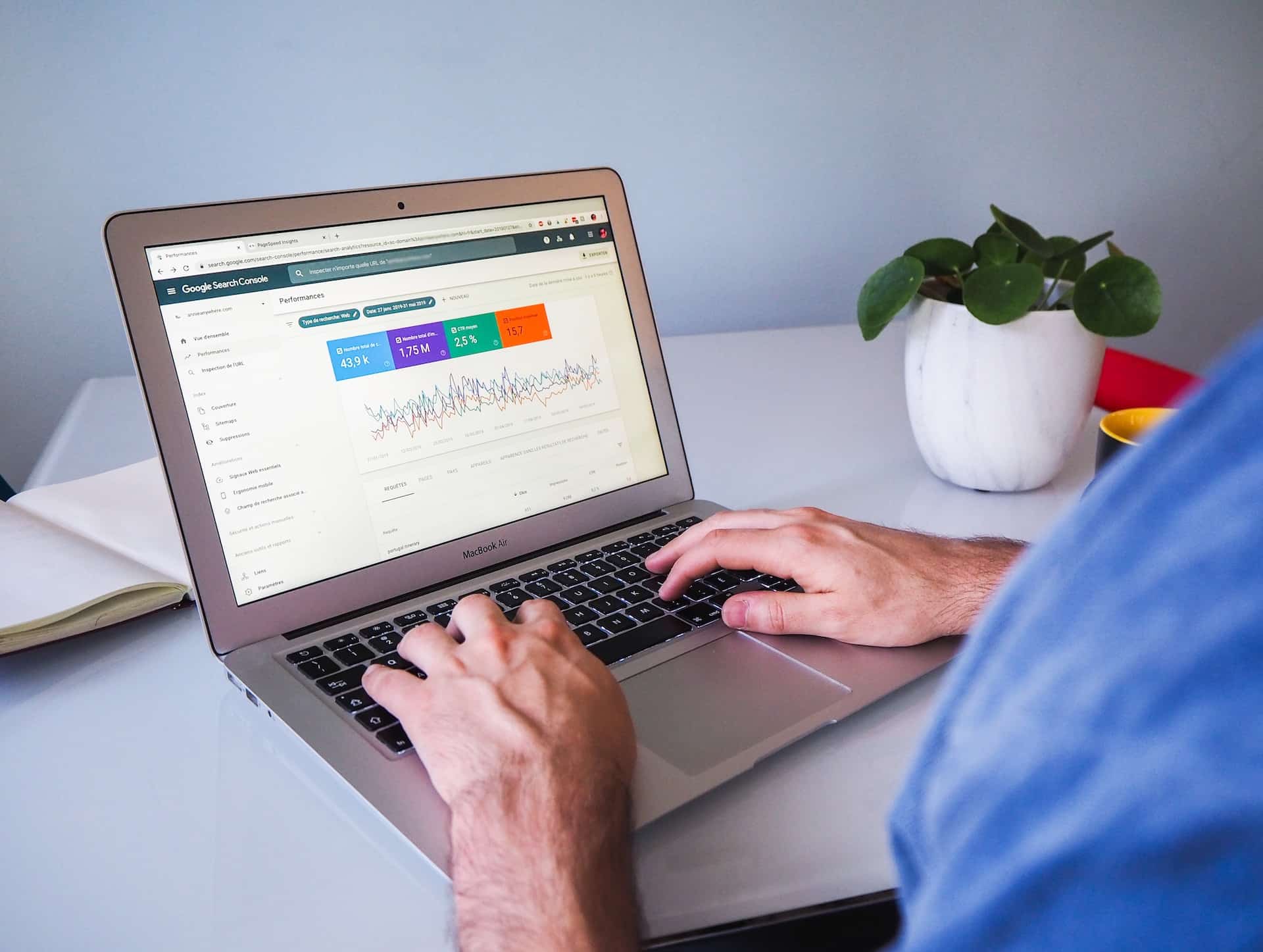Did you know that 96% of home buyers use the Internet to search for their dream property? That means if you are a real estate investor, you need to have a strong online presence to attract and convert those leads into deals. And that’s where SEO comes in.
SEO stands for search engine optimization, which is the process of improving your website’s visibility and relevance for the keywords that your target audience is searching for. SEO can help you generate more organic traffic, leads, and deals from motivated sellers who are looking for solutions to their problems.
But SEO is not a one-time thing. It’s an ongoing strategy that requires constant monitoring, tweaking, and updating to keep up with the changing algorithms and trends of the search engines. That’s why in this article, we will show you the key elements of an effective SEO strategy for real estate investors and how to implement them in 2023.
Keyword Research

Keywords are the words and phrases that your potential customers type into the search engines to find what they are looking for. They are the foundation of your SEO strategy, as they determine what topics and content you should create and optimize for your website.
Some examples of keywords that real estate investors should target are:
- sell my house fast
- we buy houses
- cash home buyers
- foreclosure help
- probate properties
- distressed properties
To find and analyze keywords, you can use tools such as Google Keyword Planner, or Ahrefs Keywords Explorer. These tools can help you discover new keyword ideas, as well as their search volume, difficulty, competition, and related keywords.
When choosing keywords, you should consider the following factors:
- Relevance: The keywords should match the intent and needs of your target audience. For example, if you are a real estate investor who buys houses in any condition, you should target keywords that indicate a sense of urgency or distress, such as “sell my house fast” or “we buy ugly houses”.
- Difficulty: The keywords should have a reasonable level of competition and ranking difficulty. You don’t want to target keywords that are too competitive or too easy, as they may not bring you enough traffic or conversions. You want to target keywords that have a good balance between demand and supply, such as “we buy houses in [city]” or “sell my house for cash in [state]”.
- Volume: The keywords should have a decent amount of monthly searches. You don’t want to target keywords that are too popular or too obscure, as they may not bring you enough qualified leads or conversions. You want to target keywords that have a moderate level of popularity and demand, such as “cash home buyers near me” or “how to sell my house without a realtor”.
On-Page Optimization

On-page optimization is the process of improving the content and structure of your web pages to make them more relevant and user-friendly for your target keywords. On-page optimization can help you boost your ranking and click-through rate on the search engine results pages (SERPs).
Some examples of on-page factors that affect your ranking are:
- Title tag: The title tag is the headline of your web page that appears on the SERPs and the browser tab. It should include your focus keyword and a compelling value proposition that entices the user to click on your page.
- Meta description: The meta description is the snippet of text that appears below your title tag on the SERPs. It should include your focus keyword and a brief summary of what your page is about and why the user should visit it.
- Headings: The headings are the subheadings of your web page that divide your content into sections. They should include your focus keyword and related keywords, as well as provide a clear and logical flow of information for the user.
- Content: The content is the main body of text, images, videos, and other elements that make up your web page. It should include your focus keyword and related keywords naturally and strategically throughout the text, as well as provide valuable and relevant information for the user.
- Images: The images are the visual elements that enhance your web page’s appeal and engagement. They should include descriptive alt text that includes your focus keyword and describes what the image is about for the search engines and users who can’t see them.
Some best practices for optimizing your on-page factors are:
- Use your focus keyword in the beginning of your title tag, meta description, first paragraph, first heading, and alt text.
- Use variations and synonyms of your focus keyword throughout your content to avoid keyword stuffing and increase topical relevance.
- Use long-tail keywords (keywords with three or more words) in your subheadings and content to target more specific queries and intents.
- Use power words (words that evoke emotions or actions) in your title tag and meta description to increase click-through rate and conversions.
- Use short and simple sentences and paragraphs to improve readability and comprehension.
- Use bullet points, numbered lists, tables, and other markdown items to organize and highlight your content.
- Use images, videos, charts, graphs, and other visual elements to illustrate and support your content.
- Use internal links (links to other pages on your website) to guide the user to more relevant and useful information and increase dwell time and authority.
- Use external links (links to other websites) to provide additional resources and references for the user and increase credibility and trust.
Technical SEO

Technical SEO is the process of improving the performance and functionality of your website to make it more accessible and crawlable for the search engines and users. Technical SEO can help you improve your site speed, mobile-friendliness, security, crawlability, indexability, and more.
Some examples of technical factors that affect your ranking are:
- Site speed: Site speed is the measure of how fast your website loads on different devices and browsers. It affects your user experience, bounce rate, conversion rate, and ranking. You can use tools such as Google PageSpeed Insights, GTmetrix, or Pingdom to test and improve your site speed.
- Mobile-friendliness: Mobile-friendliness is the measure of how well your website adapts and displays on different screen sizes and devices. It affects your user experience, traffic, conversion rate, and ranking. You can use tools such as Google Mobile-Friendly Test or Responsive Design Checker to test and improve your mobile-friendliness.
- Security: Security is the measure of how safe and protected your website is from hackers, malware, spam, and other threats. It affects your user trust, conversion rate, and ranking. You can use tools such as SSL Checker or Sucuri SiteCheck to test and improve your security.
- Crawlability: Crawlability is the measure of how easy it is for the search engines to access and scan your website’s content and structure. It affects your indexability, visibility, and ranking. You can use tools such as Google Search Console or Screaming Frog to test and improve your crawlability.
- Indexability: Indexability is the measure of how easy it is for the search engines to understand and store your website’s content and structure in their database. It affects your visibility, ranking, and traffic. You can use tools such as Google Search Console or Bing Webmaster Tools to test and improve your indexability.
Some best practices for improving your technical factors are:
- Use a fast and reliable web hosting service that can handle your traffic and bandwidth needs.
- Use a content delivery network (CDN) that can distribute your content across multiple servers around the world to reduce latency and load time.
- Use a caching plugin or service that can store copies of your web pages on the server or browser to reduce server requests and load time.
- Use a minification plugin or service that can reduce the size of your HTML, CSS, JavaScript, and other files by removing unnecessary spaces, comments, characters, etc.
- Use a compression plugin or service that can reduce the size of your images, videos, audio, and other files by using lossless or lossy algorithms.
- Use a responsive design that can adjust your website’s layout and elements according to the screen size and device of the user.
- Use a secure sockets layer (SSL) certificate that can encrypt the data transfer between your website and the user’s browser.
- Use a robots.txt file that can instruct the search engines which pages or directories of your website they can or cannot crawl.
- Use a sitemap.xml file that can provide the search engines with a list of all the pages or URLs of your website that they should crawl and index.
- Use a schema.org markup that can provide the search engines with structured data about your website’s content and structure that they can use to display rich snippets on the SERPs.
Local SEO

Local SEO is the process of improving your website’s visibility and relevance for local searches that are related to your location or service area. Local SEO can help you attract more local leads and deals from motivated sellers who are looking for solutions in their vicinity.
Some examples of local factors that affect your ranking are:
- Google My Business: Google My Business is a free tool that allows you to create and manage a business profile that appears on Google Maps and local search results. It includes information such as your name, address, phone number, website, hours, reviews, photos, etc. It affects your visibility, credibility, and ranking on local searches.
- Citations: Citations are mentions of your business name, address, phone number, website, etc. on other websites or directories. They affect your visibility, consistency, authority, trustworthiness and ranking on local searches.
Some best practices for optimizing your local factors are:
- Claim and verify your Google My Business profile and fill out all the relevant information and categories for your business.
- Optimize your Google My Business profile with keywords, descriptions, photos, videos, posts, reviews, etc. that showcase your value proposition and credibility.
- Encourage your customers to leave positive reviews and ratings on your Google My Business profile and other platforms such as Yelp, Facebook, etc. and respond to them promptly and professionally.
- Build and maintain consistent and accurate citations on other websites or directories that are relevant to your niche and location, such as Yellow Pages, BBB, etc.
- Use local keywords and modifiers in your title tags, meta descriptions, headings, content, images, etc. to target local searches and intents.
- Use schema.org markup to provide structured data about your business name, address, phone number, website, hours, reviews, etc. to the search engines.
- Use local content and links to establish your authority and relevance in your target areas. For example, you can create blog posts, case studies, testimonials, guides, etc. that address the pain points and solutions of your local customers.
Link Building

Link building is the process of acquiring links from other websites that point back to your website. Links are like votes of confidence and trust from other websites that signal to the search engines that your website is valuable and authoritative. Link building can help you improve your domain authority, traffic, ranking, and conversions.
Some examples of link types and metrics that affect your ranking are:
- Do-follow vs no-follow: Do-follow links are links that pass link juice or authority to your website, while no-follow links are links that do not pass link juice or authority to your website. You want to have a balance of both types of links to make your link profile natural and diverse.
- Relevance vs authority: Relevance is the measure of how related the linking website or page is to your website or page in terms of topic, niche, industry, etc. Authority is the measure of how trustworthy and influential the linking website or page is in terms of domain rating, page rating, traffic, etc. You want to have a balance of both types of links to make your link profile relevant and authoritative.
- Anchor text vs context: Anchor text is the clickable text that contains the link to your website or page. Context is the surrounding text that provides more information about the link to your website or page. You want to have a balance of both types of links to make your link profile descriptive and informative.
Some best practices for acquiring high-quality and relevant links are:
- Create valuable and shareable content that attracts natural links from other websites or pages that find your content useful and relevant.
- Use outreach strategies and tools to build relationships and earn links from other websites or pages that have high relevance and authority in your niche or industry.
- Use guest posting strategies and tools to create and publish content on other websites or pages that have high relevance and authority in your niche or industry and include a link back to your website or page in the author bio or content.
- Use link insertion and link exchange strategies to find pages that have high relevance and authority in your niche or industry and insert a link back to your website or page that has similar or better content.
- Use skyscraper technique strategies and tools to find and improve existing content on other websites or pages that have high relevance and authority in your niche or industry and create a better version of it on your website or page and reach out to the original sources and ask them to link back to you.
Wrapping Up
SEO for real estate investors is a powerful strategy that can help you generate more organic traffic, leads, and deals from motivated sellers who are looking for solutions online. But SEO is not a one-time thing. It’s an ongoing strategy that requires constant monitoring, tweaking, and updating to keep up with the changing algorithms and trends of the search engines.

